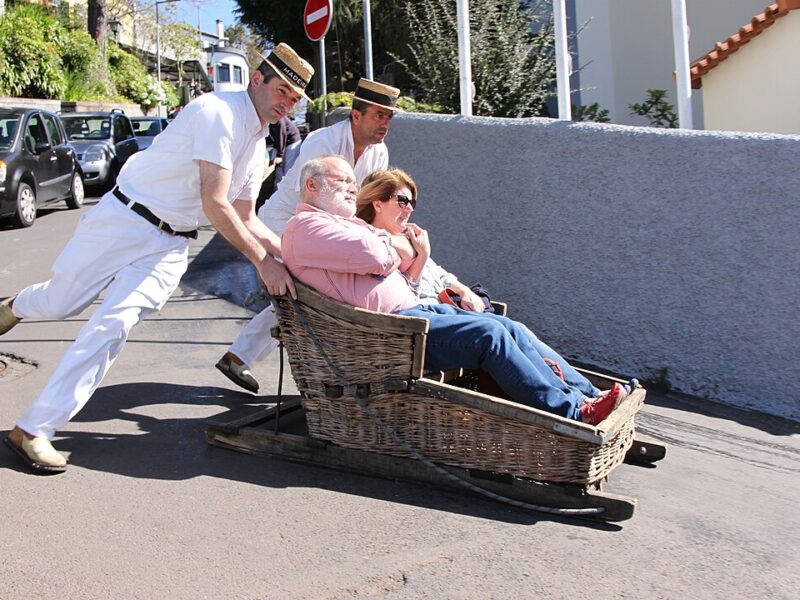I was familiar enough with the St. Louis Arch to know it was the city’s most famous landmark, but it wasn’t until I visited for the first time that I was surprised to learn that there was an observation deck at the top and the view is spectacular.
At 630 feet in height, the Arch is more than twice as tall as the Statue of Liberty in New York City, taller than the Washington Monument in D.C. and the presidential heads of Mount Rushmore would easily pass below it.
It was easy for us to get to the top, but the engineering challenge to build a system to transport visitors to the observation deck of the world’s tallest arch was anything but.
The architect who designed the arch didn’t incorporate a transportation system into his original design and by the time he reached out to the Montgomery Elevator Company in Moline, Illinois, he gave them only two weeks to solve the problem.
The original plan had stairs that go all the way to the top of the stainless-steel-clad structure, but they were never meant for visitors and it isn’t realistic to expect them to hike to the top of a building which is effectively 63 storeys tall then have them walk back down again. Elevators won’t work because you can’t operate them around a curve and escalators wouldn’t be practical because the angle is so steep that people would fall off. The eventual solution was to build a sort of train that was part elevator and part Ferris wheel where the cabins rotate as the angle of the track changes.
During my visit, four of us crammed into our spherical cabin and were quickly whisked to the observation deck at the top of the Arch. Once you’re there, you’ve only got 10 minutes to soak it all in before have to leave to make room for the next group of visitors.
Towards the east, we could see the landmarks and skyscrapers of downtown St. Louis sprawled out below including the soaring dome of the historic Old Courthouse which is part of Gateway Arch National Park. We could also easily spot Busch Stadium, home of Major League Baseball’s St. Louis Park Cardinals. We didn’t get to see a game while we were in town, but we did spend some time in the surrounding Ballpark Village, a dining and entertainment district that is popular with visitors. It’s there where we ate lunch at Salt+Smoke to sample some outstanding St. Louis BBQ.
One of the things that fascinated me from the observation deck was the curved shadow the Arch casts in the park below. I could see families sitting on the grass in the shade of the Western Hemisphere’s tallest monument, taking a bit of respite from the hot summer sun.

On the west side of the observation area, we looked out on the slow-moving brown water of the Mississippi River below. Barges slowly chugged back and forth on what is still very much a working river. Earlier that morning, we paddled that same stretch of the river in giant voyageur canoes operated by Big Muddy Adventures, a top-notch guiding outfit that brings locals and visitors out on the water to experience the Mississippi for themselves. The canoes harken back to the days when explorers and traders from New France would ply these waters in similarly designed craft. The river is certainly one of the most unique places to observe the Arch from a distance.

While the observation deck was worth the visit, we spent even more time in the free museum located beneath the arch. It describes the monumental task (no pun intended) to build the Arch, but also goes into greater details as to why it was built in the first place and the controversies surrounding its construction. As it is a monument to America’s western expansion, there are also exhibits that speak to that history and the role St. Louis played in it.
It’s there that we learned that the idea to build a structure on the St. Louis waterfront was first floated in the 1930s. The original thought was that it would be a national memorial to President Thomas Jefferson and the link to the city was that it was part of the Louisiana Purchase for which he was instrumental. Over time, the project morphed into a monument to America’s western expansion as St. Louis was the jumping-off point for the Louis and Clark expedition.
The Great Depression, the Second World War and the Korean War all conspired to push the project into the background and it wasn’t until the 1960s that the idea was revived. The Arch was finally completed with great fanfare in 1968. It took so long to complete the project that the architect who won the original design competition, Eero Saarinen, died before construction even began. The Arch’s designation as a national park only came in 2018 making it the smallest park in America’s parks system.
Now that Air Canada has introduced direct flights from Montreal to St. Louis, there’s no excuse not to visit and if you get there, don’t miss the opportunity to visit to the top of the St. Louis Arch.
DON’T MISS: Explore these 10 natural attractions in and around St. Louis
- The author was a guest of Explore St. Louis which did not read or approve this article before publication.


